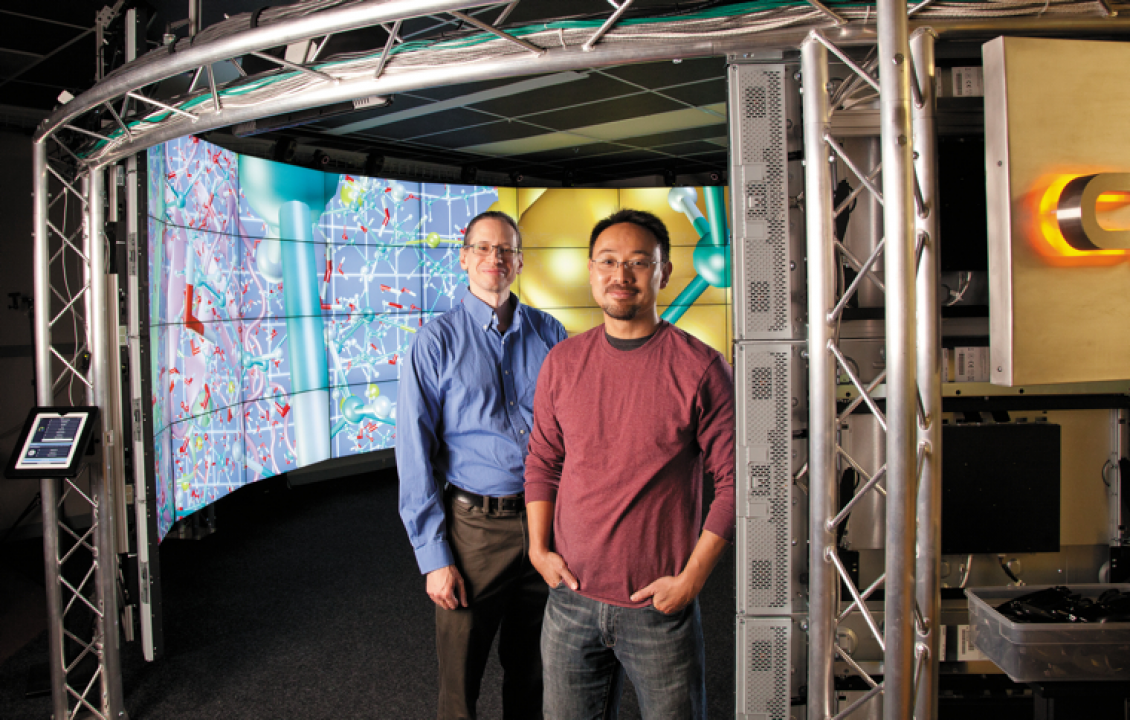|
|
||||||||||||||||||
University of Illinois at Chicago: Virtual Reality’s CAVE™ Pioneer
Participants: Andrew Johnson, Jason Leigh
CDW magazine, EDTECH: FOCUS ON HIGHER EDUCATION The CAVE2™ Hybrid Reality Environment, developed by the University of Illinois at Chicago’s Electronic Visualization Laboratory (EVL), is a featured story in the current issue of the CDW magazine, EDTECH: FOCUS ON HIGHER EDUCATION. The article reviews the technology used to build the CAVE2™ system, and how today’s tiled LCD display walls are a major improvement over the projection technology used to build the original CAVE™ twenty years ago. “In the 1990s, the only technology available to us was projectors, and they had all these limitations,” [Jason Leigh, UIC computer science professor and EVL director] says. “They were dim, expensive, hard to calibrate, and the color was frequently off. But we understood early on that things like CAVEs™ and tiled display walls were the new lenses through which scientists were going to look at their data. If they were going to spend millions of dollars on instruments for generating or collecting all their data, it made sense to us that they’d want something that gives them the best look at their data. Why look at it with a poor display?” In 2002, EVL began prototyping tiled, flat-panel LCD screen walls. Early LCD screens were expensive and surrounded by thick frames, or bezels. When arranged together to make up a bigger screen, unsightly gaps created distortions in the picture. They also did not project in stereoscopic 3D. But the researchers at EVL believed - correctly - that display manufacturers would address such limitations over time, making LCDs well suited to CAVE™ designs. Launched in October 2012, CAVE2™ is a circular room - 24 feet in diameter, roughly 7 feet high - comprising 18 columns of four 46-inch LCD screens. CAVE2™ was built in the same space as UIC’s original CAVE™, but the new incarnation offers much more room to move around. “The quality of the graphics is so much better,” says Andy Johnson, UIC associate professor of computer science and a collaborator on CAVE™, who says that he was drawn to the EVL years ago by the original CAVE™ design. “The contrast is better, the color is better, the number of pixels is incredible. Moving around the space feels more natural. It’s a much better collaborative experience than it was before.” Read the entire article Email: maxine@uic.edu Date: February 4, 2013 |